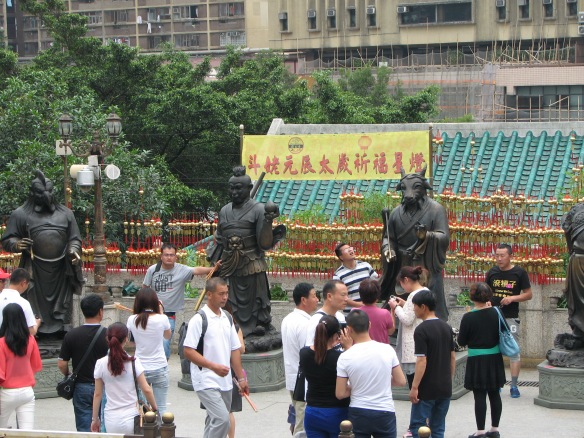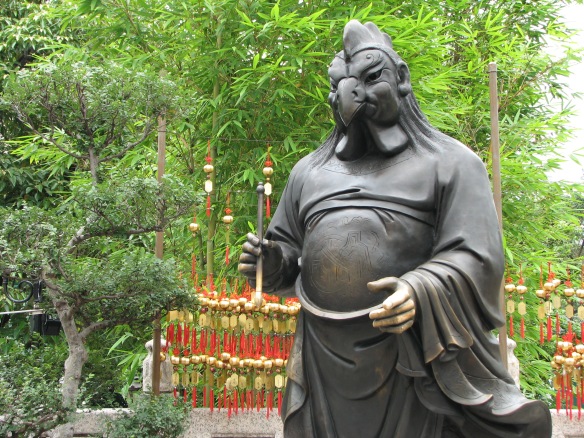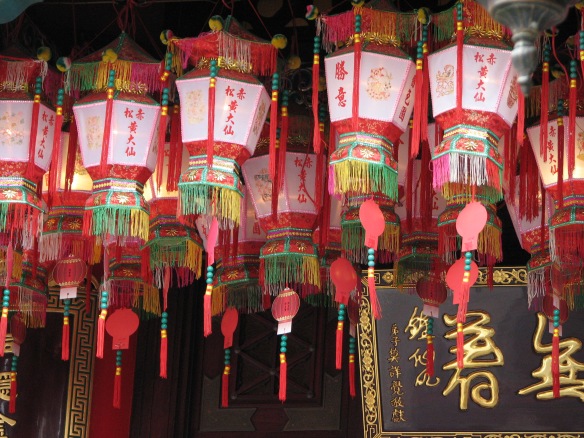To my readers: Welcome to the first post in my new blog thread: A Person + Place/Time/Thing
Robert McKimson was born October 13, 1910 in Denver, Colorado. He worked for Disney for a while, but is best known for animating and directing Looney Tunes and Merrie Melodies for Warner Bros. Cartoons. He was a contemporary of Chuck Jones.
According to his son in the wonderful short documentary Drawn to Life: The Art of Robert McKimson, McKimson suffered a concussion in an accident. When he recovered, the concussion had improved his powers of visualization, and he became an even faster and better animator.
Robert McKimson created and/or directed shorts with a stellar list of cartoon stars: Daffy Duck, Porky Pig, and Bugs Bunny. He also created the Tasmanian Devil. He also created Speedy Gonzales. And, if they weren’t enough, he also created the indomitable Foghorn Leghorn, an oversized rooster with an oversized voice and accent.
As a kid I got such a kick out of Foghorn Leghorn. He was loud, blustering, and incredibly funny (I admit that I still think all these things as an adult, too!).
A few years ago I went to check out the Wong Tai Sin Temple in China’s New Territories. It’s dedicated to the gods of medicine, but upon entering the temple grounds I was met by statues that were oversized animals of the Chinese zodiac including – you guessed it – Foghorn Leghorn’s Asian brother.
In honor of Robert McKimson and his larger-than-life rooster, (“Well I say there, boy! I say!”) I am reprinting the post I wrote describing the statues. – Jadi
I spent a few weeks north of Hong Kong in the New Territories. The transportation system is easy and each day I went exploring. I’d read up, select yet another fascinating place to discover, and off I’d go.

As a massage therapist I went to pay my respects to Sun Si-miao Zhen Ren, Perfected Master and god of Chinese Medicine. Taoists honor him as a god of healing. Even today, the ill and infirm (or people wishing to stay healthy) visit his temple to make offerings.
So I headed to Wong Tai Sin Temple. Inside, I was met by wonderful bronze statues of the twelve animals of the Chinese zodiac!
I managed to photograph all but the ox and dog.










The temple is just outside a metro stop, smack dab in an urban area. Who would have suspected that Foghorn Leghorn resides there?

In memory of Robert McKimson, 13 October 1910 – 29 September 1977

NOTES: © 2015 & 2021 Jadi Campbell. Previously published as Adventures in China’s New Territories 4: The Gods of Medicine. Photos © Jadi Campbell or Uwe Hartmann. More of Uwe’s images from our earlier trips to China and Hong Kong and his photography may be viewed at viewpics.de.
B
Click here for my author page to learn more about me and purchase my books.







 We hired a driver and sweet young man named Ley to guide us around. We made an outing to Paksong on the Bolaven Plateau, home of small, superb Laotian coffee plantations.
We hired a driver and sweet young man named Ley to guide us around. We made an outing to Paksong on the Bolaven Plateau, home of small, superb Laotian coffee plantations. 
 On our drive back we stopped at a market hall. Taxis were filling with local workers who stopped to buy groceries.
On our drive back we stopped at a market hall. Taxis were filling with local workers who stopped to buy groceries.  Rows of vendors sold grades of rice,
Rows of vendors sold grades of rice,  eggs, fresh fruit, coffee (natch), bolts of cloth, dried fishes,
eggs, fresh fruit, coffee (natch), bolts of cloth, dried fishes, 
 vegetables and herbs, freshly cooked food and plastic bags of marinades and sauces.
vegetables and herbs, freshly cooked food and plastic bags of marinades and sauces.
 The variety of fresh produce is tremendous: alone in these photos I can identify three different sizes and shapes of eggplant, tomatoes, cilantro, parsley, Thai basil, oranges, peppers in every size and grade of hotness, cucumber, bitter melon, carrots, zuccini, onions, garlic, bok choy, green and Napa (Chinese) cabbages, ginger, limes, long beans, shallots, spring onions, chives, squash, rose apples.
The variety of fresh produce is tremendous: alone in these photos I can identify three different sizes and shapes of eggplant, tomatoes, cilantro, parsley, Thai basil, oranges, peppers in every size and grade of hotness, cucumber, bitter melon, carrots, zuccini, onions, garlic, bok choy, green and Napa (Chinese) cabbages, ginger, limes, long beans, shallots, spring onions, chives, squash, rose apples.
 Women from the hill tribes had wares for sale. An older woman had set up a stand away from most of the others. Curious, I walked over.
Women from the hill tribes had wares for sale. An older woman had set up a stand away from most of the others. Curious, I walked over. She had images of the Buddha, and items for religious and medical purposes. Talons, hooves,
She had images of the Buddha, and items for religious and medical purposes. Talons, hooves,  deer skulls,
deer skulls,  bundles of herbs and animal horns.
bundles of herbs and animal horns. 


 The pairs called to me on some strange level…. “What are they for?” I asked. Ley explained to me that they are placed in a home to protect it and the family that lives there.
The pairs called to me on some strange level…. “What are they for?” I asked. Ley explained to me that they are placed in a home to protect it and the family that lives there.























